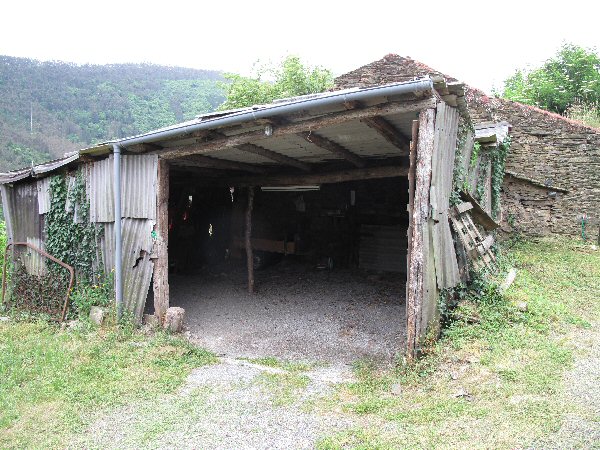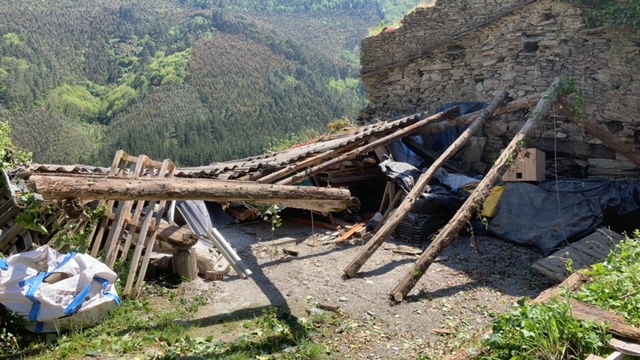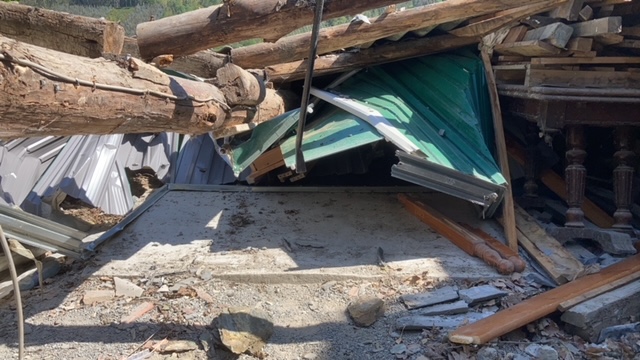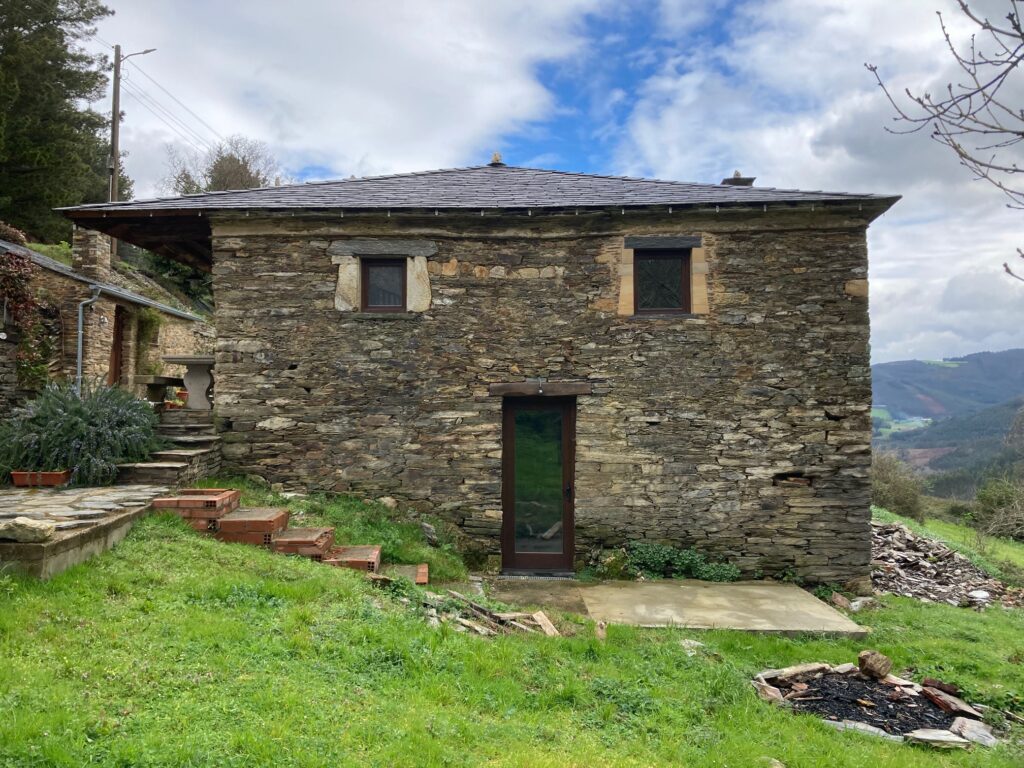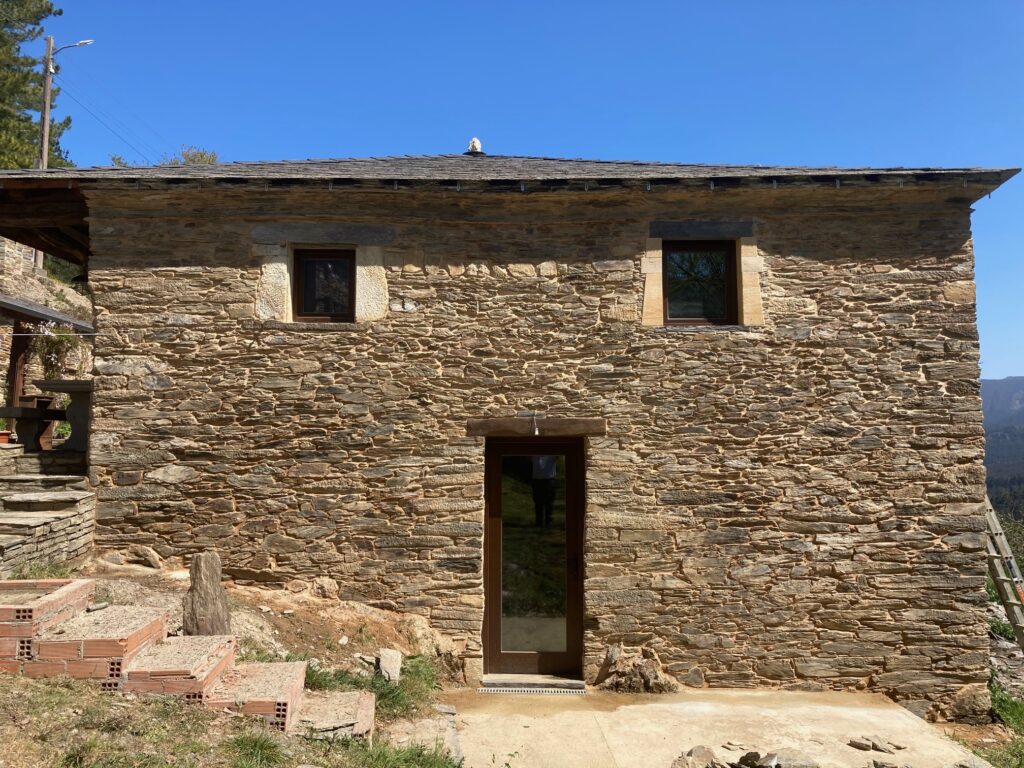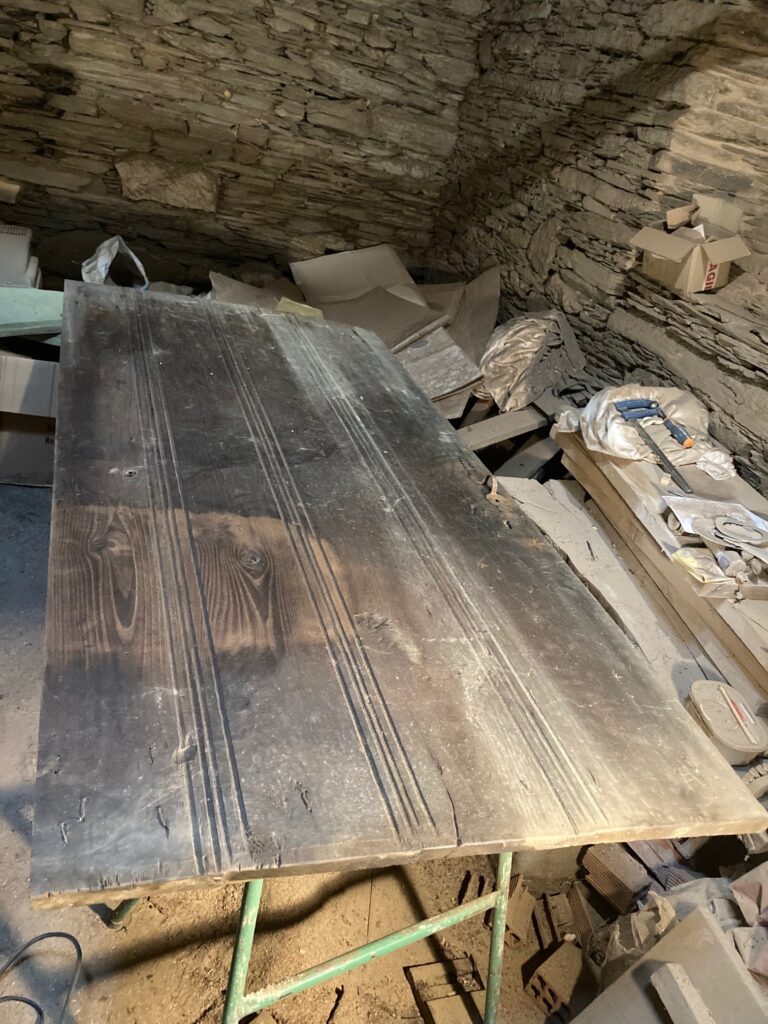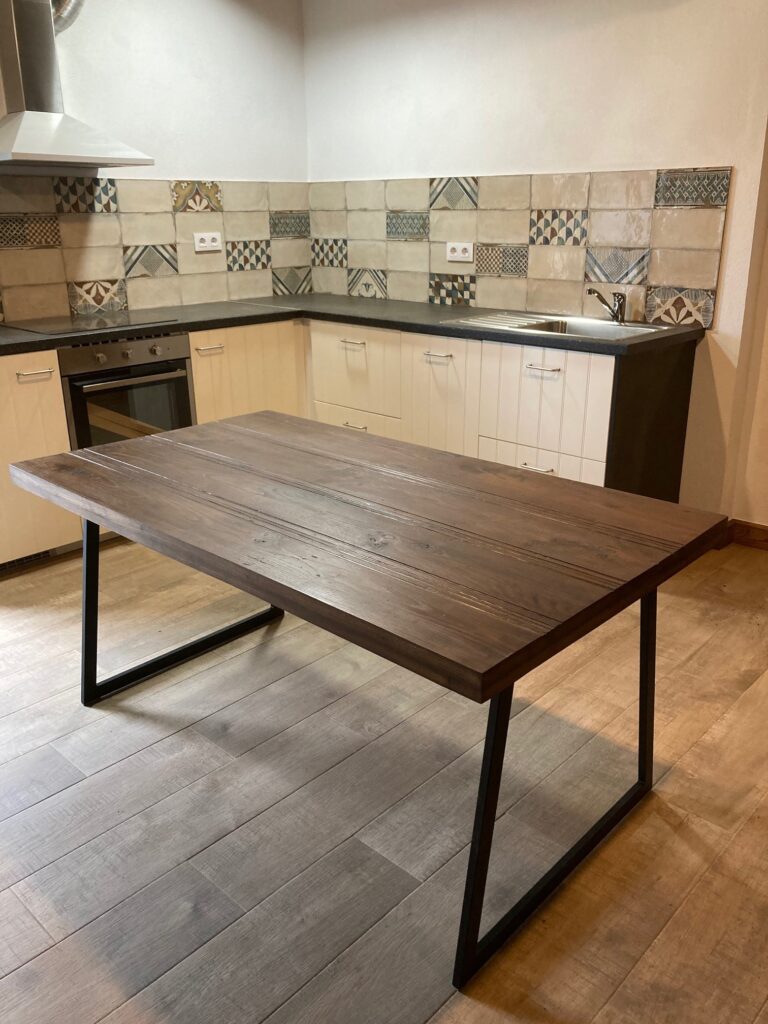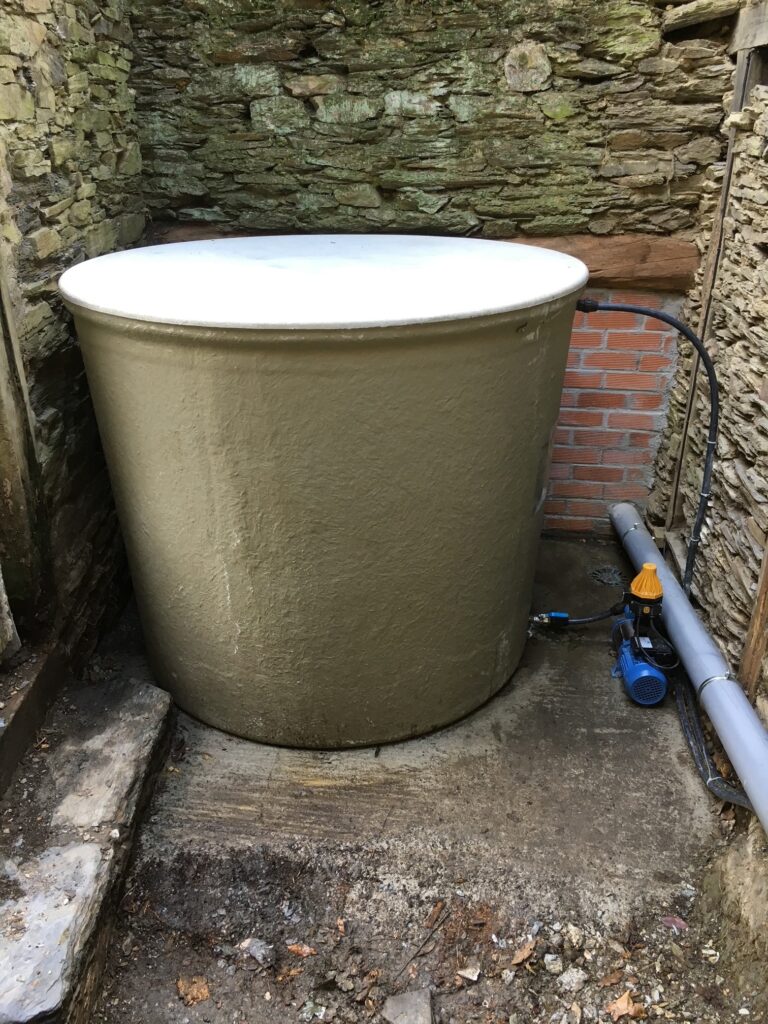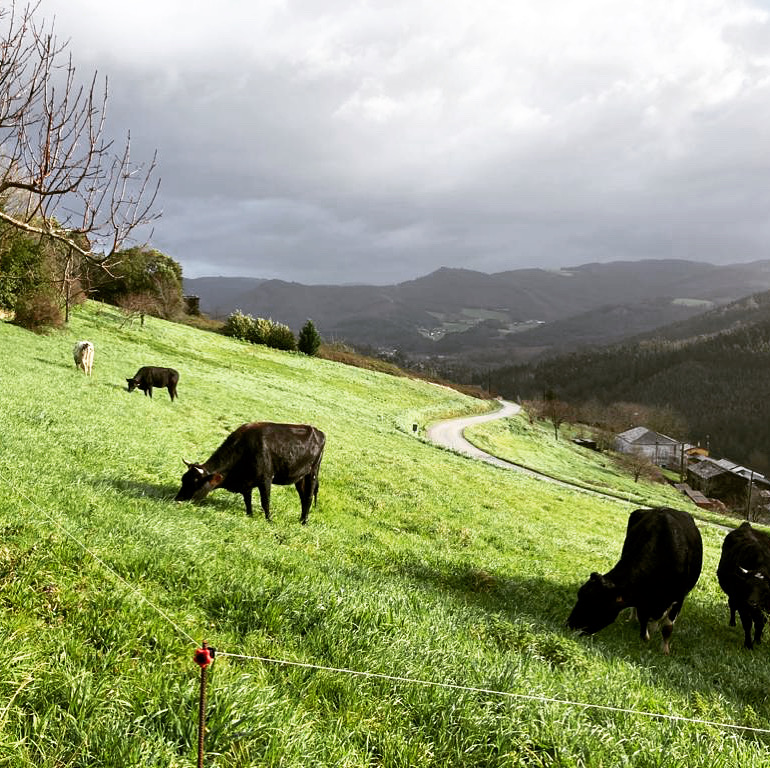It’s rapidly approaching eleven years since we bought Casa Liñeiras, our own little corner of paradise, and we are now as the stage where we are discussing cushions and toilet roll holders for the apartments so we must be very close to being ready to open.
Work has now switched to the outside with ground works for a terrace, tree works, clearing and cleaning, and some drainage to allow access to what will be the parking area. Everything was in hand, a work schedule decided (albeit in my head), and money set aside to pay for the stuff I can’t do myself.
Then, one calm, sunny and dry Friday morning, while we were out at the supermarket, disaster struck.
When we bought the house in 2010 we were ‘blessed’ with a lean-to garage at the far end of the big house from the barn. Our neighbour Carlos kept his car in it, and in one corner in an unlocked cupboard, was his air rifle and ammunition which he used for shooting rats. While no-one could, or would, describe it as an appealing building, I had a grudging admiration of the construction and the way in which a simple timber frame successfully supported the massive weight of about sixty cement roofing panels, three deep in some places after years of patching.
Since moving to Galicia we have parked our cars in the garage and just prior to moving we erected a little green aluminium shed inside in which we stored boxes of knickknacks and keepsakes which we brought from the UK, my Golf clubs, and a old wooden bed frame and table. We’ve done no maintenance, except to remove some creeping ivy, and taken this useful storage area somewhat for granted.
Over the winter, after a couple of storms, we noticed that the garage was developing a bit of a twist. The lean-to element was no longer leaning against anything, the entrance seemed to have stooped a little, and the contents were more open to the elements. A few weeks later it moved even further, and we made the decision to no longer use it for vehicle parking, and to empty most of the contents of the little green shed into dry storage inside the big house.
While we no longer trusted the garage, we thought we’d time to determine what to do with it, but there was no accounting for the Galician wood-unfriendly climate, and the devastating effects of an army of hungry woodworm. While we were twenty miles away on Friday morning the garage decided to give up it’s loftiness and to become low-rise.
We were unpacking our shopping when a neighbour, the one who used to park his car in the garage, broke the news to us. I’m certain I detected a small grin. With sinking hearts we went to investigate, and our worst fears were confirmed.
In these situations there is only one thing to do…. have a cup of tea. So that’s what we did.
We then donned protective closing and full face masks with filtered breathing to set about taking off the panels and stacking them neatly on the drive to await specialist disposal. The aim was to remove enough weight to safely retrieve what was left in the little green shed, rescue Dizzy the hard-working cement mixer, and ensure that no neighbours cats had been trapped inside the collapse.
Five backbreaking hours later we’d; removed all the panels, retrieved a slightly bent ‘Dizzy’, found two crushed Samsonite suitcases, determined that the old pine bed frame was now firewood, and seen the devastation that a tonne and a half of roof and beams can do to an aluminium shed.
The nine substantial vertical posts which supported the structure were rotten through with a mixture of wet rot and woodworm infestation. On reflection I think that it’s a miracle that the thing had stood as long as it had on what was essentially legs of dust. The big relief is that no-one, and no animal, was inside it when it went, and that we’d no vehicle in there and had removed most items of value.
The really good news is that my golf clubs somehow survived unscathed, although my playing partners here may disagree.

